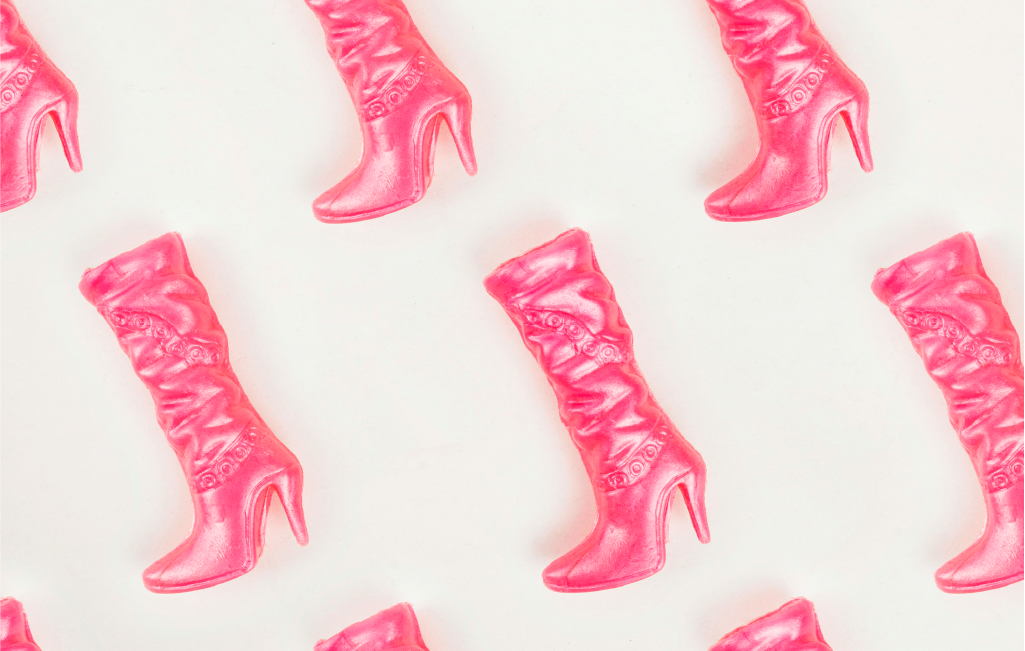CART SUBTOTAL: 1.950,00€

Fashion does more than reflect culture: it challenges it. It shines light on overlooked corners of society, giving visibility to what often goes unseen. Vivienne Westwood didn’t merely adopt punk aesthetics; she elevated an entire subculture to the global stage. Alexander McQueen didn’t just design clothing; he created garments that reshaped perceptions of women.
So, when Spanish brand Desigual launched its “Not a Doll” campaign with actress Ester Expósito, it felt right on message. A powerful statement boldy confronting the objectification of women.
But here’s the twist: the word “doll” doesn’t carry a single meaning. Context changes everything. What some see as a symbol of oppression, others reclaim as a form of empowerment.
So how do these meanings coexist? And what do trans rights have to do with it? We explored the evolving meaning of “doll” in both mainstream and LGBTQ+ culture and here’s what we found.
Understanding the Term “Doll” Across Cultures
In mainstream culture, calling a woman a “doll” often reduces her to something merely decorative. Pretty, perhaps, but passive. Someone without a voice, agency, or depth. The word condenses the male gaze into a single term, suggesting beauty without substance and presence without personhood.
But, step into queer and transfeminine spaces, and “doll” take on a very different meaning. In ballroom culture,immortalized in “Paris is Burning” or depicted in “Pose,” the doll represents an aspiration toward feminine beauty and identity, a term of profound endearment. Among trans women of color especially, it carries connotations of pride, mutual recognition, and sisterhood. It becomes a celebration rather than a diminishment.
Desigual, the “Not a Doll” Controversy
Desigual’s campaign leans into rejecting the dumb-blonde-pretty woman stereotypes. Their white shirt with bold black text says it all: women aren’t here to be looked at. They’re here to be heard. The message is clear, and it resonates. It’s fashion with a voice.
Enter Connor Ives. In response to growing anti-trans laws in the UK and USA, the London-based fashion designer designed a “Protect the Dolls” shirt. All proceeds go to Trans Lifeline, a US-based, trans-led organization supporting the community. Same visual idea: a white shirt, black text. But here, the message is about defending identity. Visibility. Solidarity. Celebrities, from Pedro Pascal to Tilda Swinton, were quick to pick up the cause and show support; and so did the general public.
What Happens When Empowerment Messages Overlap
Desigual and Ives both speak about gender and identity. But they start from different points. One says: stop calling women dolls. The other says: being a doll means survival, beauty, and strength. The timing, though, worked in Connor Ives’s favor. His campaign launched before Desigual’s launched theirs, which means that in the current cultural moment, the word doll has already begun being redefined, going from strictly LGBTQ+ spaces into the mainstream.
So when Desigual came out with its “not a doll” concept just right after Ives, audiences immediately noticed the overlap and conflict. And not everyone took it well. The resemblance raised eyebrows. Some have called it insensitive, a direct and unfortunate response to the resistance of trans individuals. Others see it as tone-deaf, even discriminatory, particularly as it felt like it was clashing with or undermining a vital message from a marginalized community at a critical time. Either way, the public read between the lines, and the reaction was swift.
What Happens When Brands Make a Cultural Faux Pas?
Companies are working globally, across diverse cultures. The desire to fit in with a local audience and understand their sensitivities isn’t new. It also isn’t the first time we’ve seen a cultural faux pas because of it by a well-known fashion brand. Dolce & Gabbana struck the wrong chord in and ad featuring a Chinese model struggling to eat spaghetti with chopsticks that caused a boycott of the brand in China. Gucci and Prada caused public outrage and backlash over blackface sweaters and blackface figurines respectively, leading to hiring diversity & inclusion initiatives in both companies. Comme des Garçons appropriated cornrows, Burberry a noose hoodie, and the list goes on… Brands loose the trust of their audience and thus business.
A Callout to Cultural Sensitivity
Culture lives in language, and language never stands still. Cultural diversity means meaning shifts across context and place. What’s empowering today might land differently tomorrow. What is acceptable in one space may not be in another country. Even with the best intentions, brands that overlook cultural shifts and nuances risk missing the mark. It’s not enough to mean well: you have to be current, and crucially, mindful of the impact your message has, not just the intent. You have to be listening.
At Maka, this is what we do: we’re always tuned into how language lands, how meanings shift, and how culture shows up in words. We believe in inclusion, and we support brands and companies: through transcreation, localization and DEI programs. We want companies to express themselves with care, respect, and cultural sensitivity, because that’s how messages truly resonate and that’s how brands can help make a better world.
Brands that are aware, empathetic, and tuned in are those the right message.





